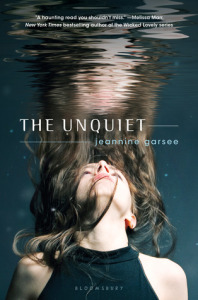By Haley Bryant
I think we have a lot to learn about ethnographic practice from street magic….stay with me, here.
What is Magic?
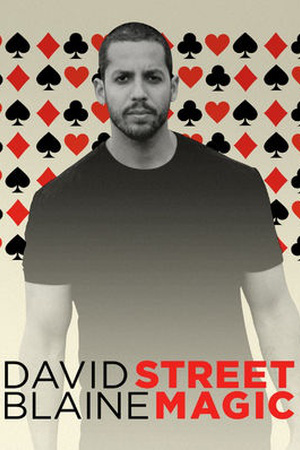
David Blaine, Street Magic
When I say ‘street magic’ I don’t mean just any close-up prestidigitation. I am talking specifically about magician and ‘endurance artist’ David Blaine White (1973–)–aka David Blaine–who some (me) might argue made contemporary magic performance what it is today. Blaine forged his very successful 20 year career out of an historical tradition of street magic–performing close-up tricks for anyone and everyone who will stop on the street to watch. In fact, his first television special, which aired on NBC in 1997, was simply titled: ‘Street Magic’, setting a new precedent for the art. Many magicians who practice this style of magic, a la Chris Angel, engage in street magic as a form of promotion for large, flashy stage shows in places like Las Vegas. Blaine, on the other hand, continues to foreground this sort of intimate, inter-personal exchange of illusion and collaborative knowing.
His 2010, 42 minute television special David Blaine: What is Magic? (available on Netflix, FYI) is divided between footage of Blaine prepping for one of his most famous tricks, The Bullet Catch, and performing close-up magic for survivors of Hurricane Katrina in New Orleans and folks living in rural appalachia. While there is room to rightfully criticize these segments for their orientalist approach to the lives of low-income, people of color, Blaine approaches these individuals with the same cool, almost detached, demeanor he puts on for every performance. This has an almost egalitarian effect, in fact–all people everywhere, regardless of circumstances, can participate on the brink of reality and illusion and engage in a form of conversation which transcends spoken language. Magic is fundamentally contingent on each actor playing their part and responding to prompts from the other. Illusions do not exist outside of what is and is not understood between the magician and his audience–something that functions even through a television screen, across both space and time. There is a grammar and syntax of magic: a correct order of exchange built from discrete morphemes combined in specific ways, which build toward a desired outcome. The magic trick grows not out of the words exchanged (spoken dialogue is often a form of diversion) but on complementary shifts in perspective and comprehension.
Part of what makes magic, and I mean the sort of magic we are accustomed to here in the West, so powerful is its ability to function as a genre of speech. It is easily combined with other speech genres or patterns to operate in unique ways. As anthropologist Graham Jones explores, gospel magicians leverage the impact of illusions to underscore the legitimacy of religious belief. They move back and forth across the line between ‘real’ and’ ‘fake’ to diminish the gap between spectacular events and mundane experience. After all, if you could believe that a minister can pick your card out of a deck, couldn’t you at least begin to believe him when he tells you God is everywhere all the time?
Real Illusions
What sets Blaine apart from other magicians in an important way is his long-time interest in and practice of ‘endurance stunts’. Here’s a quick run-down of the sorts of endurance stunts Blaine has undertaken in case, unlike me, you haven’t spent hours watching his old YouTube videos: he’s been buried alive, frozen in a block of ice, stood on tall things for a very long time, lived in a glass box suspended over the Thames for more than a month, submerged himself in water for seven days, and held his breath for a very, very long time–among other things. I encourage you to seek out the details of these stunts because some of them are absolutely bonkers, particularly ‘Electrified’.
In 2015, while performing the bullet catch trick for a live audience, the cup slipped in his teeth, allowing the bullet to shatter his mouth guard and injure the back of his throat. Throughout all of these stunts Blaine doesn’t eat, and only drinks a minimal amount of water. After each stunt he is rushed to the hospital and has experienced hypothermia, shock, concussions, and exhaustion numerous times in service of challenging the limits of what humans are capable of. He famously does a trick where he literally eats a whole wine glass–bites into it, chews it up, and swallows it. He joked recently that his dentist was absolutely appalled by the state of his teeth and he has difficulty chewing anything at this point. There is nothing ‘fake’ about these stunts, in fact Blaine has volunteered himself for numerous biometric studies in which scientists and academics use him as a case-study for the physical limits of the human body. He spends years training his body to withstand the stresses he puts it under. Take a look at this twenty-minute TED talk he did in 2009 which thoroughly explains how he is able to hold his breath for extended periods of time.
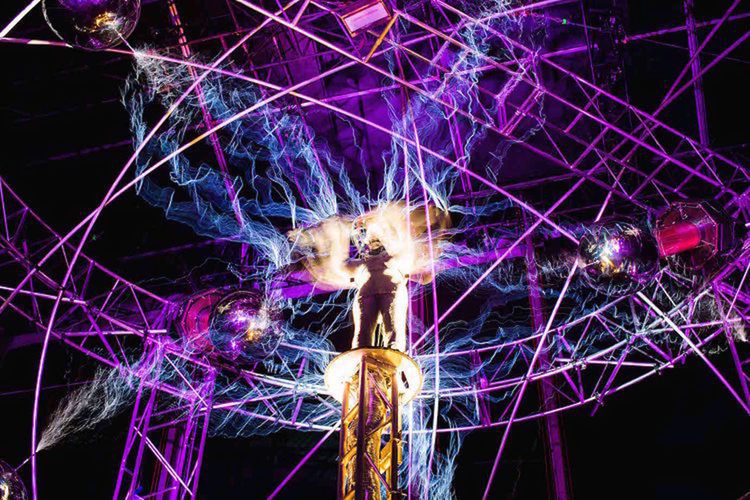
David Blaine, Electrified
Live and In Person
I recently had the distinct privilege of seeing David Blaine perform live in Baltimore, Maryland on his first-ever nationwide tour. The show begins with a flashy animated video which serves as a framing device for both the show and Blaine’s approach to magic. Images of animals tumbling out of a human mouth are intercut with old photographs of Blaine as a small child, accompanied by a voiceover done by Blaine himself. The video concludes with Blaine extolling the ‘Spectacle of the Real’, a phrase Blaine uses to disrupt the real-illusion dichotomy often ascribed to magic. He makes it clear through the course of his show that we rely much more heavily on illusion to generate our everyday realities than we may realize, and that often what seems to be ‘fake’ can only exist on a very ‘real’ foundation. Unlike the gospel magician, who inverts the dichotomy of ‘real’ and ‘fake’, Blaine seeks to dismantle the categories of illusion and reality and demonstrate that one does not exist outside of the other. The video concludes with Blaine saying, “We only have one life, and one body to live that life with.” With this, he firmly grounds his fantastical magic in a material reality.
French scholar Roland Barthes argues that these sorts of magical performances go beyond mere entertainment, allowing the magician to extract physical gesture from linear time and elevate it to a more extraordinary level. This creates an atmosphere of ‘pure visuality,’ born out of a separation of gesture from time and material, which disrupts the typical cause-effect narrative we rely on to comprehend events. Blaine demonstrates–insists, even–that magic is not purely visual, it does not exist in some superlative space between person and thing–it exists within and between things (or, bodies). This takes Barthes argument one step further, by declaring the cause-effect narrative itself an illusion. To really reduce it down, we know things because they are real, and they are real because we know them. Blaine suggests that magic is born from and lives in the tangible, knowable world around us. ‘Illusion’ is an indistinguishable component of ‘real’ life. Specifically, Barthes pointed out that spectacular magic stage shows rose to prominence during the post-WWI period as an urban response to the dehumanizing experience of industrial labor. The magician is able, on stage, to perform labor without any brutality or force, reducing it to its ‘essence’. That brutality is the star of Blaine’s act, and reminds us that truly transcending what may feel like an oppressive or limiting reality can only be achieved by exerting almost unthinkable amounts of embodied force. Because there is no real divide between illusion and reality for Blaine, magic inherently cannot be purely visual because that is not how we experience everyday life.
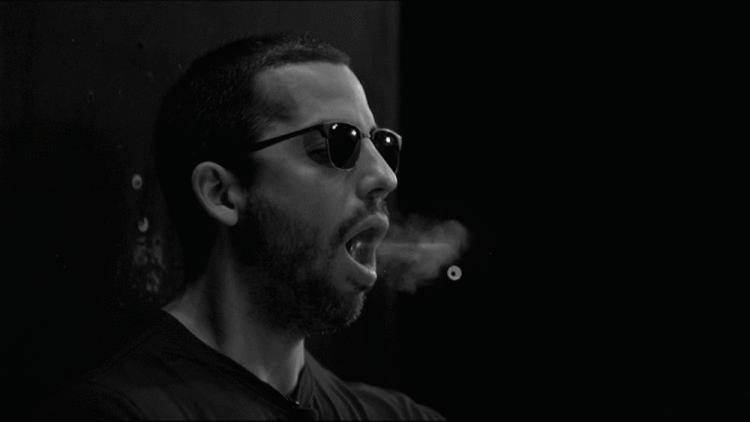
The Bullet Catch, by Andreas Poupoutis
While his endurance stunts seem to sit in a category separate from his illusion-based magic, he successfully demonstrates that these two genres represent a false dichotomy. His newest stage show includes both illusion and endurance. In one trick he brought a volunteer on stage, and proceeded to guide them through picking, ostensibly via free will, the final piece to an almost-finished puzzle from a bucket of 2,000 unique pieces. He also shot a fireball out of his mouth after drinking propane, and regurgitated two live frogs. At the end of his show, he stated that this tour, taking him to 40 cities across North America, is his greatest endurance feat yet. While he was specifically discussing the fact that he couldn’t eat on show days and had to drink baking soda water, so as not to kill the frogs he ingested nightly, he also alluded to the fact that building a space of collaborative knowing with thousands of new people night after night is an exhausting and laborious process in and of itself.
In the case of close-up magic Blaine only has to contend with a small group of people–generally engaging directly with only two or three at most. While it may be more difficult to pull off sleight-of-hand when everyone is so physically close, building a rapport and nudging the participant’s assumptions and perceptions is easier. To establish that relationship in a crowded auditorium, ensuring that every person has followed the trick and is coming to the correct conclusions about the illusion along the way, seems more difficult. The magician cannot read his audience in the same way he might were they gathered around him, which is probably why stage magicians rely so often on volunteers. It also underscored Blaine’s reliance on materials–while everyone contextualizes objects a little differently a bullet has some pretty universal implications that are easily understood.
Refiguring Reality
While in New Orleans in ‘What is Magic?’ Blaine performs a trick for a couple standing on the porch of their waterlogged house in which he turns the man’s $5.00 bill into a shower of $100s. We are meant to presume that the money is real, and that Blaine leaves the family with their newfound windfall. Blaine performatively uses sleight-of-hand to comment on very real, and very material processes–how does this mystical exchange of currency mirror the mystical, uncontrollable qualities of a natural disaster as well as the inaccessible, uncontrollable processes of the state in response to one? Instead of continually distracting us from the ‘real’, Blaine utilizes patently-fantastical processes to bring our attention back to fantastically-real situations.
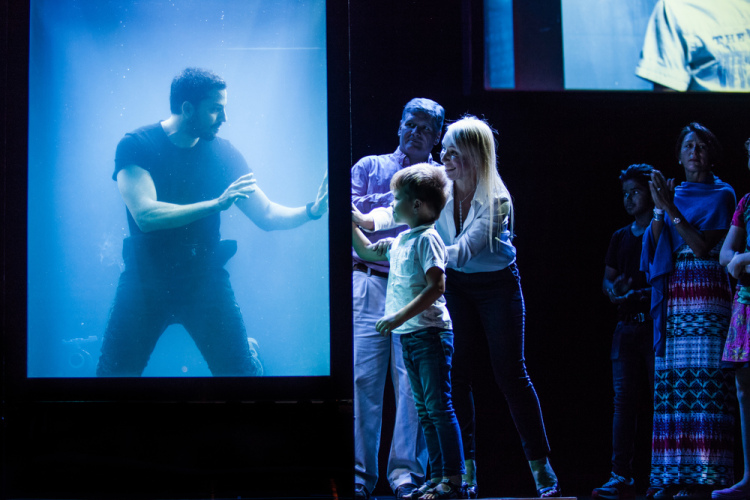
David Blaine, Street Magic
It seems to me as if David Blaine could be a student of philosopher Paul Ricoeur. Blaine constructs self-contained narratives, in which he refigures non-sequential events and experiences of every-day life into a logical story-telling sequence. Furthermore, he mediates these narratives through the embodied, material practice of both endurance stunts and close-up illusions.Through a spacio-temporal narrative process, Blaine takes a reality we feel deeply to be true, reorders it and reframes it, and guides us through to a new and seemingly ‘more real’ future-reality.
In a Heideggerian sense, Blaine challenges the always-already assumptions we hold about the world, those preconceived notions we (perhaps unknowingly) rely on to generate anticipatory versions of ourselves, for ourselves and the world. He insists that our Being-In a state of illusion or suspension holds infinite possibilities, and carries us–all of us–through to a future contingent on those possibilities. This is an important connection, because Heidegger’s notion of Being-in-the-world is intended to be used as a catchall for subjects and objects alike, there is no utility in separating ourselves, for instance, from the things surrounding us. Our consciousness is ‘consciousness of something’, there can be no consciousness detached from objects. Similarly, all objects ‘exist’ because they are held in some consciousness. Essentially, this means that what we think of as ‘ourself’ is relational. Due to this relationality, our Being is always at stake and always evolving. Now, think about the microcosm of a magic trick–an individual exists in relation to things (a deck of cards, maybe), to other people (audience and magician), and to their own opinions and pre-formed ideas of how the world works. Before, during, and after this encounter the individual’s own conception of themselves has to shift in relation to a shifting of all of the other actors. You are, quite literally, a different person once the trick is over.
During a Q&A while recovering from his 10 min 03 sec breath hold at the end of his live show, Blaine was asked by a young audience member if he feels that people are easily tricked. He thought for a moment and replied, “No. I think people are much smarter than they’re given credit for–they are very good at figuring things out and are actually naturally very skeptical.” To me, this is what Blaine’s brand of magic revolves around: not the notion that people are easily bamboozled and unable to follow a card trick, but that when we work together to confront an illusionary situation we can collaboratively produce and comprehend a new reality. This, it seems, is the ‘Spectacle of the Real’ Blaine refers to. All ‘Reality’ is borne from spectacular illusion, but is no less real for it. Blaine just happens to directly acknowledge the illusion, going far to amplify it, whereas it generally gets folded into mundane experience.
Magical Ethnography/Ethnographic Magic
I know what you’re thinking: “I can absolutely see the parallels between Blaine’s reality-challenging endurance magic and ethnography!” I knew you would, but just in case it’s still fuzzy let me expound a bit more.
I think there is a literal comparison to be made between the work of the ethnographer on the ground and the street magician–engaging with people Othered from one’s self in an intimate way. I think the metaphor, however, goes deeper than that. As ethnographers, the work that we do relies on an illusion of universality–if we are seeking to understand another culture, society, or event we must concede that there is something mutually comprehensible therein. In order to reach that state of comprehension we must collaboratively fashion narratives which guide us and our interlocutors from a place of differential knowing rife with skepticism, through a place of complete un-knowing, and ultimately to a place of collective agreement–a new reality. Of course, much like Blaine, the ethnographer wields a great deal of power throughout this process in terms of interpretation and outcome. Whereas Blaine knows the desired outcome of his illusion or stunt, he cannot control the reactions of his audience or rely on their reacting in a desired way. This is much like the approach many ethnographers take–we go into an encounter with specific questions, hypotheses, and expectations but cannot control for the colloquial realities that already exist within our field site. Furthermore, Blaine grounds his magic practice in a rich history of magical endurance. For example, before his frog-regurgitating trick during the stage show he played another small video about the magician Mac Norton (1876-1953), The Human Aquarium, who pioneered the trick.
Additionally, Blaine’s productions, whether television special, live stream, or stage show, mirror the tangible products of ethnography. Blaine gives considerable time to exposition of a trick or stunt grounding it in a tradition of thought and practice, introducing the circumstances of the trick or stunt, and situating his embodied Self in the development of the trick and its eventual outcome. Scenes of street magic interspersed between larger-scale stunts serve to reveal his methodologies and ideologies, and offer vignettes from his magical experience.
So, what can we, as ethnographers, learn from David Blaine’s street magic? I suggest that it can be very useful to allow space for illusion or un-knowing. Whatever comes out of an ethnographic encounter is not ‘The Truth’, in fact it represents an entirely new reality built by and meaningful to those individuals involved. Ethnography has always felt to me like a form of magic, and it turns out there may be something more to that than my personal sense of awe.
 Haley Bryant is a proud native of Nashville, Tennessee and current grumpy resident of our nation’s capitol. She received her MA in museum anthropology from GWU and currently works on cultural programming and collections digitization with the Smithsonian Institution’s Department of Anthropology. When not badly embroidering pop-culture references, she is probably daydreaming about: community archiving projects, indigenous systems of knowledge organization and production, activism and advocacy, ethnographic film, and rural queer theory. Give her a shout: [email protected]
Haley Bryant is a proud native of Nashville, Tennessee and current grumpy resident of our nation’s capitol. She received her MA in museum anthropology from GWU and currently works on cultural programming and collections digitization with the Smithsonian Institution’s Department of Anthropology. When not badly embroidering pop-culture references, she is probably daydreaming about: community archiving projects, indigenous systems of knowledge organization and production, activism and advocacy, ethnographic film, and rural queer theory. Give her a shout: [email protected]
Works Cited
Header Image is a still from Buck Creative Studio’s animated introduction to David Blaine’s “Spectacle of the Real” show.
Barthes, Roland. Mythologies. Points, 2014.
Goto-Jones, Christopher (2014). “Magic, Modernity, and Orientalism: Conjuring representations of Asia.” Modern Asian Studies 48(06): 1451-476.
Heidegger, Martin. Being and Time. Trans. George Steiner. Chicago, IL: U of Chicago Press, 1991.
Jones, Graham M. Trade of the tricks: inside the magicians craft. Berkeley: U of California Press, 2011.
Ricoeur, Paul. Time and narrative. Ed. Kathleen McLaughlin. Vol. 1&2. Chicago, Ill.: U of Chicago Press, 2009.
Advertisements THANK YOU FOR SHARING! WE APPRECIATE YOUR SUPPORT!



